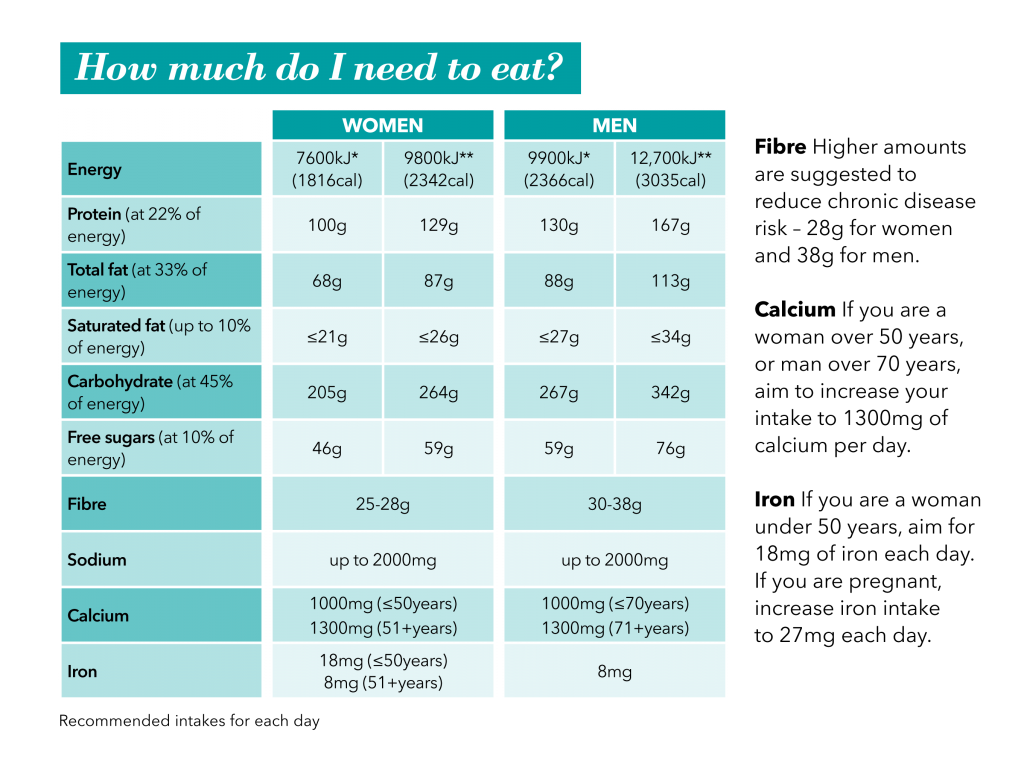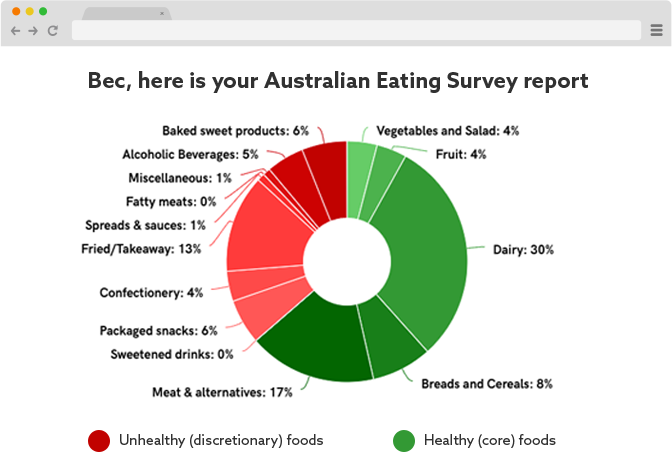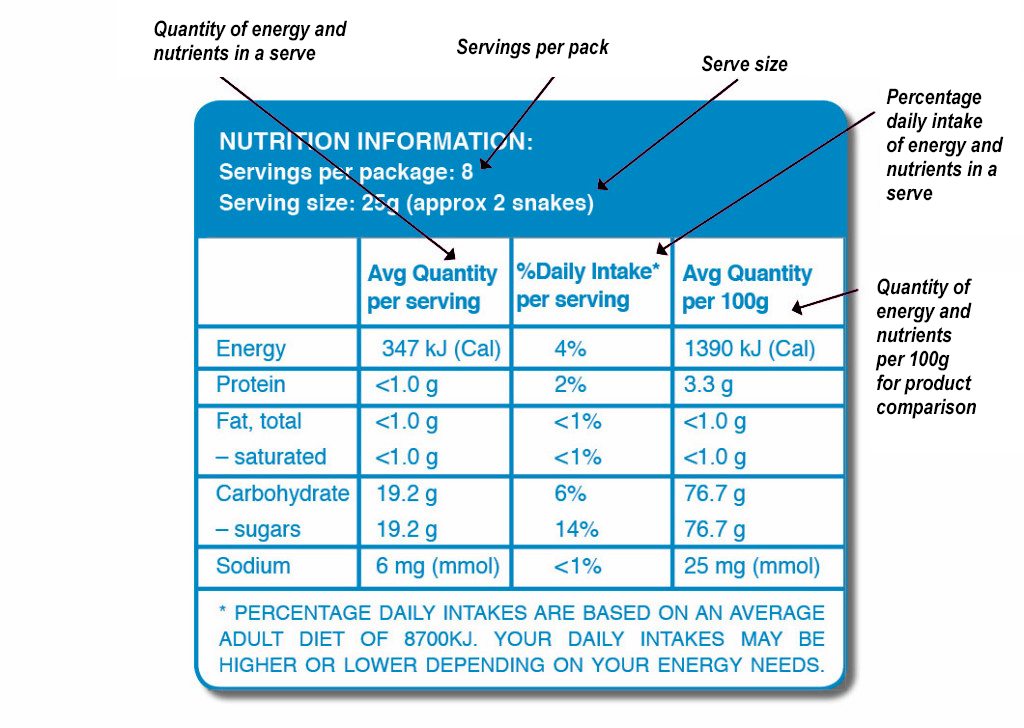This advice has included information on Recommended Dietary Intakes RDIs or Allowances which are the amounts of specific nutrients required on average on a daily basis for sustenance or avoidance of deficiency states. Delay the build-up of plaque a fatty substance in your arteries.

Nutrient Intake Adequacies According To Australian Dietary Guidelines Download Table
Unhealthy saturated and trans fats Unhealthy saturated and trans fats can heighten your risk of heart disease by increasing the bad LDL cholesterol and lowering the good HDL cholesterol.

Recommended daily fat intake australia. During this review dietary energy requirements and requirements for the nutrients were considered. Nutrition Australia encourages people to choose additional extra serves from the five core food groups and to limit serves of discretionary foods to a maximum of one serve per day approx. That is about 44 grams to 77 grams of fat per day if you eat 2000 calories a day.
The majority of Australian adults achieve the WHO guidelines of. As both quantity contribution to total energy intake and quality type and nature of macronutrients are of importance guidance on the quality aspects of carbohydrates and fats are also included in most recommendations. How do the new guidelines 2013 differ from the old 2003.
Normally solid at room temperature sat fats are often in dairy foods butter cream full-fat milk and cheese meat coconut milk and cream palm oil cooking margarine snacks like chips cakes biscuits and pastries and takeaway foods. For men and women across all age groups discretionary food intake was high and contributed a similar proportion towards daily energy intake around one third of total energy intake AIHW 2018. The revised Australian Dietary Guidelines were released in February 2013 with an increased focus on foods and food groups instead of nutrients making them more user-friendly.
The Australian and New Zealand Governments have been providing nutrition advice to the public for more than 75 years. Limit intake of foods high in saturated fat such as many biscuits cakes pastries pies processed meats commercial burgers pizza fried foods potato chips crisps and other savoury snacks. They also have an increased focus on the effect of food on health.
About 5867 grams of fat per day. The DI values are based on an average adults daily requirement of 8700kJ. The revised NRVs have a new RDI of 900mcgday for men and 700mcgday for women along with an optimal intake to prevent chronic disease of 1500mcgday for men and 1220mcgday for women and a maximum intake of 3000mcgday.
About 97111 grams of fat per day. DIs are not recommendations but rather an acceptable intake which provides a benchmark suitable for the majority of people. The DI values are not a target for your days intake nor are they an average.
We recommend limiting your intake to one serve per day as a maximum approx 600kJ. Within the South African context these recommendations have been translated to the Food Based Dietary. Among adults in 201112 the proportion of daily energy intake from discretionary foods ranged from 33 to 36between 5 to 7 serves per day on average.
Advice has also been provided in the form of Dietary. Its the big picture that matters. Replace high fat foods which contain predominantly saturated fats such as butter cream cooking margarine coconut and palm oil with foods which.
If you are older than 50 you will need to reduce your kilojoule intake by around 500kJ per day for females or 1300kJ for males this will vary depending on how active you are. The document Recommended Dietary Intakes for use in Australia NHMRC 1991 which had also been adopted for use in New Zealand contained recommendations for 19 nutrients and dietary energy. Replace high fat foods which contain predominately saturated fats such as butter cream cooking margarine.
And for fat between 20 to 40. Limit intake of foods high in saturated fat such as many biscuits cakes pastries pies processed meats commercial burgers pizza fried foods potato chips crisps and other savoury snacks. Your DIs may be higher or lower depending on your energy needs.
The DI values should be used as a guide to help you. Median daily energy intake was 10380 kJ for men compared to 7080 kJ for women. Consuming more than the recommended amount of saturated fat is linked to heart disease and high cholesterol.
If you are younger than 31 males need about 800kJ more while females need about the same kilojoule content as for the 31 to 50-year-old age group. The type of fat you eat is more important than the total amount. About 7889 grams of fat per day.
How much fat should you eat a day. Energy intake increased steadily with age to a peak of 13010 kJ for males aged 16-18 years and 8140 kJ for females aged 16-18 years and then declined gradually with age. The Guidelines also include a daily allowance for additional unsaturated fats from spreads oils nuts or seeds.
3000μg RAE Vitamin B1. Those for which values were set are listed below. It is recommended to eat more of some types of fats because they provide health benefits.
It is recommended to eat less of other types of fat due to the negative impact on health.
Daily Intake Guide Healthy Eating Made Easy Front Of Pack Labelling For Food And Drink In Australia Daily Intake Levels
Daily Intake Guide Healthy Eating Made Easy Front Of Pack Labelling For Food And Drink In Australia Myths
Poor Diet Poor Diet In Adults Australian Institute Of Health And Welfare
Poor Diet Poor Diet In Adults Australian Institute Of Health And Welfare
Recommended Daily Intake Corporate Wellness Training Health And Fitness Workshops
Daily Intake Guide Healthy Eating Made Easy Front Of Pack Labelling For Food And Drink In Australia Calculating Food Energy
Daily Intake Guide Healthy Eating Made Easy Front Of Pack Labelling For Food And Drink In Australia How To Read Dig
Daily Intake Guide Healthy Eating Made Easy Front Of Pack Labelling For Food And Drink In Australia The Basics

How Much Do I Need To Eat Healthy Food Guide

Nutrient Intake Adequacies According To Australian Dietary Guidelines Download Table

Why Australian Dietary Recommendations On Fat Need To Change
Diet Guidelines For Meat And Full Fat Dairy Have Changed What And How Much Should We Now Eat Abc News

